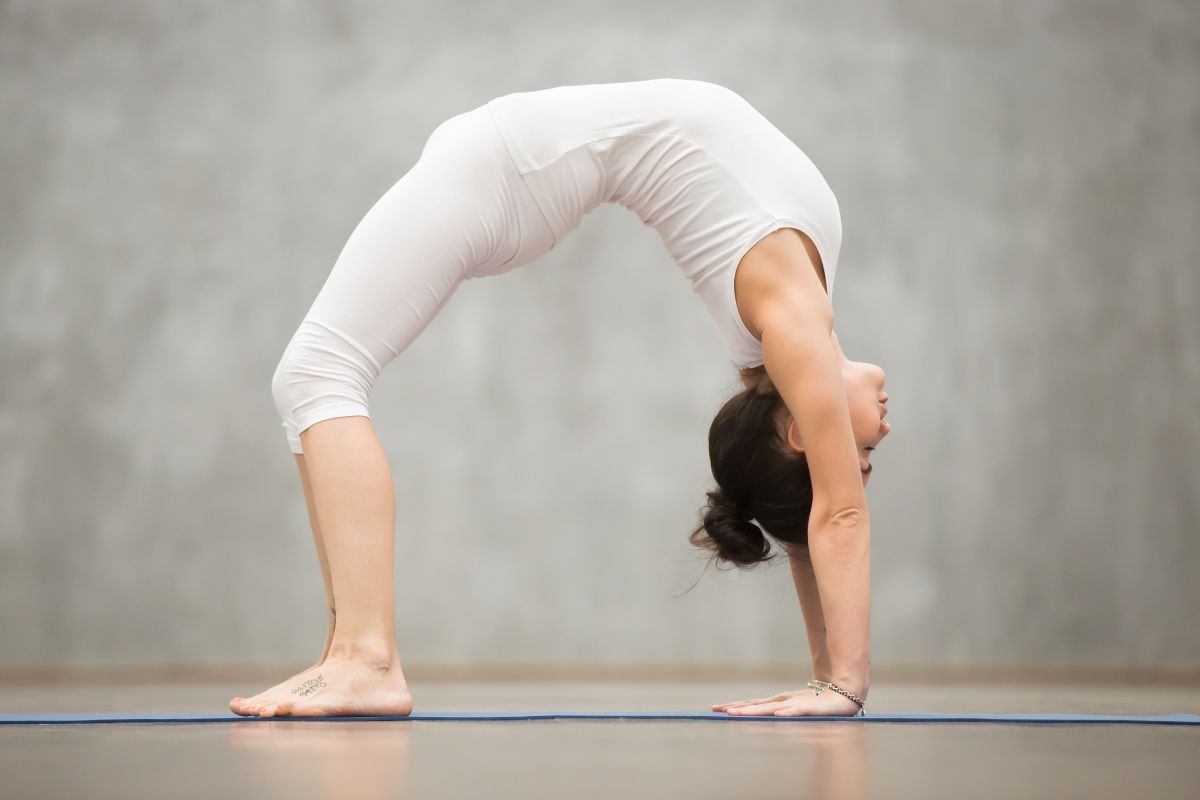10 Yoga Poses to Help You Breathe Easier Every Day

Breathing is Life, yet few of us ever notice it. Shallow, irregular breathing is all too common because of stress, posture, and lack of exercise. Yoga, with its careful attention to breath (pranayama) and conscious movement, provides a powerful means to expand lung capacity, oxygenation, and respiratory well-being.
In this guide, we’ll explore 10 yoga poses that enhance breathing by opening the chest, strengthening the diaphragm, and calming the nervous system. These poses are suitable for beginners as well as experienced practitioners and can be easily integrated into your daily routine.
Why Yoga for Breathing?
Yoga has been practiced for thousands of years, and its link to better breathing is backed by modern science. Regular yoga practice:
- Enhances lung function by promoting deeper breathing in and out.
- Relaxes breathing problems like asthma, bronchitis, or allergies.
- Aids mental acuity by ending stress and bringing balance to the nervous system.
- Increases energy levels by enhancing oxygen flow within the body.
- Increases mindfulness by promoting attention to every breath.
No matter whether your aim is stress relief, enhanced sporting performance, or just breathing more comfortably, these yoga poses can work miracles.
10 Yoga Poses to Improve Breathing
1. Sukhasana (Easy Pose) with Deep Breathing
Sukhasana is a simple cross-legged sitting position, best for sitting awareness of breathing.
How to:
- Sit cross-legged on the ground, keeping your back straight.
- Put your hands on your knees.
- Close your eyes and breathe slowly and deeply, filling your belly and chest.
- Practice for 5–10 minutes.
Benefits: Strengthens diaphragmatic breathing, quiets the mind, and enhances oxygenation of the body.
2. Tadasana (Mountain Pose) with Chest Expansion
Tadasana aligns the spine and opens the chest, making deeper lung expansion possible.
How to do it:
- Stand with feet hip-width apart.
- Interlock hands, lift arms overhead, and inhale deeply.
- Exhale while bringing down arms. Repeat for 5–10 breaths.
Benefits: Enhances posture, strengthens the diaphragm, and encourages full lung breathing.
3. Bhujangasana (Cobra Pose)
Bhujangasana stretches the lungs and chest, making breathing more efficient.
How to do it:
- Lie on your stomach with your palms beside your chest.
- Inhale, press chest away from the floor, elbows bent.
- Hold 15–20 seconds, breathing deeply.
- Release on exhalation, slowly.
Benefits: Opens chest, strengthens respiratory muscles, and dispels stress.
4. Matsyasana (Fish Pose)
PROMISED in yoga texts as the “destroyer of all diseases,” Fish Pose is a throat decongestant and chest opener.
How to do it:
- Lie on your back with straight legs.
- Place hands under hips and press chest up.
- Place the crown of the head on the ground and keep the chest raised.
- Breathe in for 20–30 seconds.
Benefits: Sturdy breathing capability, helps the lungs, and corrects effortless breathing ailments.
5. Setu Bandhasana (Bridge Pose)
Bridge Pose expands the chest and increases lung capacity.
How to do:
- Recline and bend the knees with feet hip-width apart.
- Breathe in and lift your hips upwards towards the ceiling.
- Cross fingers under the back for support.
- Hold for 20–30 seconds, breathing deeply.
Benefits: Opens lungs, relaxes intercostal muscles, and quiets anxiety.
Also Read: Fibermaxxing Diet for Seniors
6. Anjaneyasana (Low Lunge)
Extends the rib cage and chest to enable deeper breathing.
How to do it:
- Step one foot forward into a lunge.
- Bend the opposite knee downwards towards the floor.
- Extend arms overhead and breathe.
- Hold for 20–30 seconds on each side.
Benefits: Opens lungs, frees tension from the diaphragm, and improves circulation.
7. Ustrasana (Camel Pose)
Camel Pose is beneficial for lung-opening and correcting posture.
How to do it:
- Come onto the floor on your knees with knees hip-distance apart.
- Place hands on heels and arch back and lift chest.
- Breathe in deeply, with throat open.
- Keep for 15–20 seconds.
Benefits: Opens throat and chest, tones respiratory muscles, and reduces fatigue.
8. Ardha Matsyendrasana (Seated Spinal Twist)
Twist asanas activate the lungs and help purify the body.
How to do it:
- Sit with straight legs. Bend the right knee and place the right foot outside of the left thigh.
- Bring your right hand back and your left elbow to the outside of your right knee.
- Breathe in deeply to lengthen the spine, breathe out to twist deeper.
- Hold for 20–30 seconds on each side.
Benefits: Spreads the flexibility of the lungs, aids digestion, and increases oxygen supply.
9. Balasana (Child’s Pose) with Conscious Breathing
Child’s Pose is a soothing pose that permits relaxed, deep breathing.
How to do it
- Kneel on the floor and sit on your heels.
- Extend your arms forward and place your forehead onto the mat.
- Breathe deeply into the belly and back for 1–2 minutes.
Benefit: Stimulates diaphragmatic breathing, releases fatigue, and reduces stress.
10. Savasana (Corpse Pose) with Awareness of Breath
This final relaxation pose combines mindful breathing with stillness.
How to do it:
- Lie on your back with arms relaxed by your sides.
- Close your eyes and observe natural, rhythmic breathing.
- Stay for 5–10 minutes.
Advantages: Calms the nervous system, slows heart rate, and enhances lung efficiency.
Yoga for Better Breathing Tips
- Practice regularly: 10–15 minutes a day is sufficient.
- Practice with pranayama: Pranayama breathing practices like Anulom Vilom or Kapalabhati enhance effectiveness.
- Listen to your body: Don’t push when breathing or stretching.
- Have a quiet room: Keep quiet to facilitate deeper breathing.
- See your physician: If you experience asthma, COPD, or other respiratory diseases, check with your physician prior to starting.
Last Words
Breathing is more than an action—it’s a power. Incorporating these 10 breathing-enhancing yoga poses into your practice will increase the function of the lungs, decrease tension levels, and enable deeper relaxation. Beginner or expert, yoga encourages us to pause, breathe, and find the moment.
Remember: Consistency is the key. Taking just a few minutes a day to practice mindfully can unlock stronger lungs, a calm mind, and a healthier you.
Frequently Asked Questions
1. Can yoga heal breathing sicknesses like asthma?
Yoga can’t “heal” asthma or other chronic respiratory diseases, but can reduce symptoms, enhance lung capacity, and enhance the quality of life if practiced regularly. Always consult a doctor with health concerns.
2. How often should I do these poses to improve breathing?
For optimal benefit, do a minimum of 4–5 times a week for 20–30 minutes, with alternating breathing practice and asanas.
3. Are these yoga poses easy for a beginner?
Yes, most of the given poses are easy for beginners. Move slowly, take support with pillows if needed, and don’t strain too much.
4. Can yoga restore lung function after COVID-19 or respiratory disease?
Yes, pranayama and yoga postures may be used to regain lung function and endurance after illness. Regaining should, however, be graduated and under the guidance of a physician.
5. Is breathing better with pranayama or yoga postures?
Both are beneficial. Asanas stretch the lungs physically, while pranayama teaches one in voluntary control over the breath. Both together provide optimum benefits.

